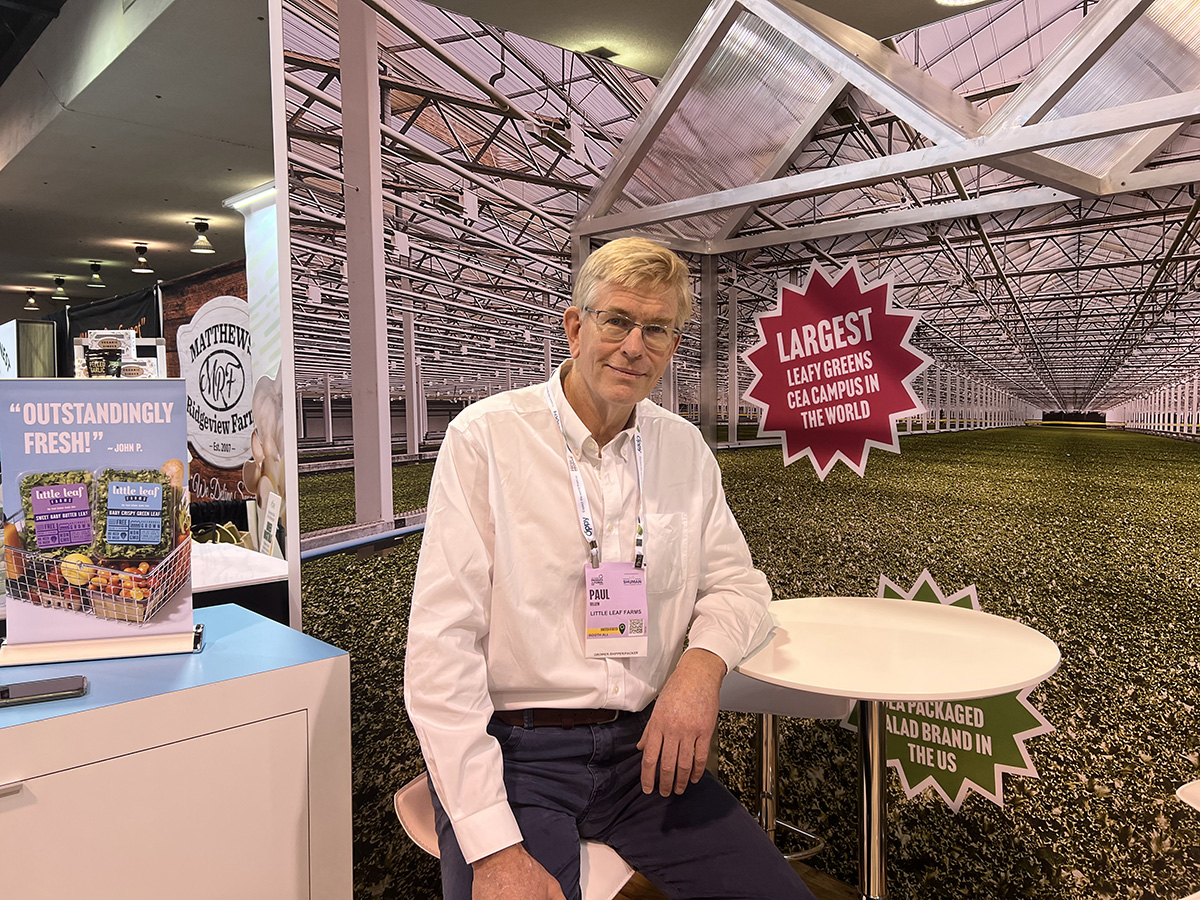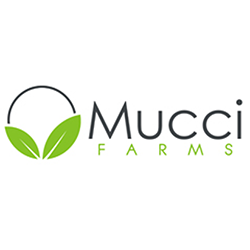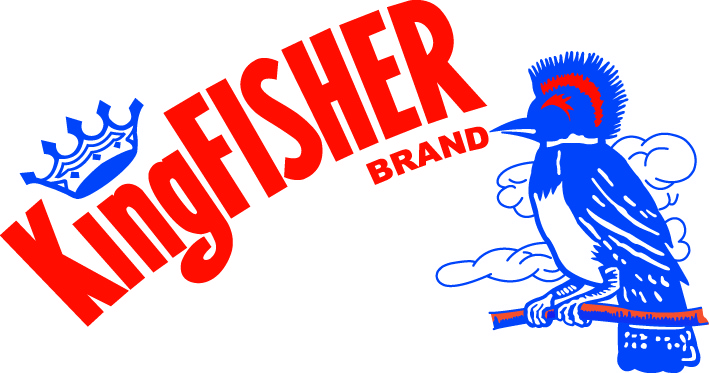ANAHEIM, Calif. — With the opening of a fourth greenhouse at its campus in McAdoo, Pa., earlier this month, Devens, Mass.-based Little Leaf Farms is closing out the year on a high note and reflecting on a decade of continued growth.
The Packer sat down with Paul Sellew, founder and CEO of Little Leaf Farms, at the International Fresh Produce Association’s Global Produce and Floral Show to learn more about what’s ahead for the company.
“Prior to Little Leaf it was primarily two valleys in California providing almost 100% of the leafy greens to the country,” Sellew says. “I don’t think that’s a healthy food system.”
Sellew says while leafy greens used to travel some 3,300 miles from California to Massachusetts, where Little Leaf is headquartered, the greenhouse grower with facilities in Massachusetts, Pennsylvania and soon Tennessee is servicing 54% of the country with leafy greens.
The McAdoo site now totals 40 acres and supports the company’s growth into the Southeast, Midwest and Canada, making it the largest controlled environment agriculture leafy greens facility in the world, Sellew says. The McAdoo greenhouse will support Little Leaf’s romaine leaf lettuce, which has doubled in national distribution since its launch in July.
“The market loves our romaine leaf lettuce,” says Sellew, adding that more than 8,000 grocery stores carry the company’s products.
Sellew says Little Leaf’s third campus in Manchester, Tenn., will be in production next and is expected to open in fall 2026 to support the Midwest, Southeast and Texas markets.
“Eventually we’ll expand nationally,” he says.
How has Little Leaf Farms succeeded where others in CEA have failed?
“Billions of dollars have been vaporized, with vertical farms contributing to the vast majority of it,” Sellew says. “Greenhouse has been here before, it’s here now, and it will continue to be in the future.”
Sellew adds that great teams across its ops, logistics, sales and marketing have also contributed to the company’s growth.
The Little Leaf Farms CEO adds that the company is strategic in its growth, looking for new markets with available infrastructure and adequate population density close to where the leafy greens will be grown.
“We have catalyzed the growth of CEA,” Sellew says. “We’re a packaged salad company that can deliver a fresh eating experience to most markets within 24 to 36 hours of harvesting.”


















